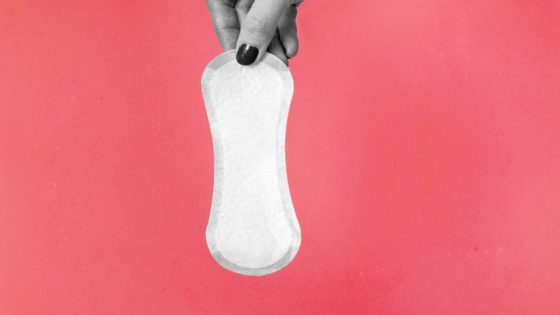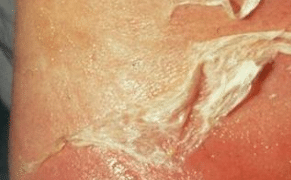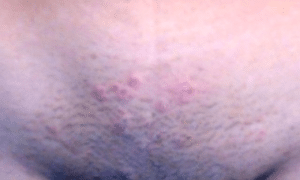Explore on bumble bee sting pictures, swelling, pain, remedy, first aid, treatment and how to avoid any bumble bee bite.
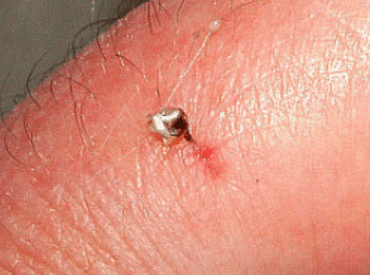
bumble bee sting
Bumble Bee Sting
They are also referred to as bumblebees or humble bees. Many people ask if bumble bee sting. The answer is yes, and usually the queen and workers are the ones that sting, but their sting is not so much harsh or itchy as compared to that of a honey bee.
All insects will be hostile when faced with danger or their territories are under attack. As compared to honey bees, they are much less likely to sting. Bumble bees are known to produce numerous stings at a given strike on one place. Their male bees does not sting and do not have stinger.
By stinging, bumble bees inject venom in your body. This may develop severe pain and sometimes about 1% an allergic reaction.
This pain and reaction can differ per incident. The worker and queen bumble bee can withdraw their stingers and able to sting again and again. Although for a honey bee, they can’t do so as they are unable to withdraw stinger. So they cannot sting more than one time.
Like most other stinging wasps and bees, bumble bees sting to defend themselves and their nest. Bumble bees, unlike honey bees, are able to sting multiple times, but they are much less likely to sting than hornets, yellow jackets or honeybees. The bumblebee and workers and queens are the only members of the nest that are able to sting.
How Does Bumble Bee Sting Look Like?
Bumble bees usually will inject venom into their enemy through the stinger. In human, the most frequent reaction is short lived, but painful. However, the range or reactions may also include an allergic reaction to the injected venom. Usually, the reaction is dependent on the number of times someone is sting and the victim’s allergic sensitivity to the venom. The following reactions may occur:
- A local, non-allergic reaction that produces swelling, itchiness, redness at the sting site and normally lasts for only a few hours and may as well last for few days. While these reactions may show up immediately after the sting, they usually show up a few hours after the sting.
- The allergic reactions to the venom or reactions from multiple bumble bee stings that can result in a general allergic reaction, a systematic reaction that affects the whole body, or an anaphylactic reaction that is a possible life- threatening allergic response. Always see your doctor for advice and care if the sting develops such complications to avoid more problems.
How to avoid stings
The main and best way to avoid bumble bee sting is to stay away from their nests areas or flowers or other plants that host them. It is sometimes difficult to realize you are near a bumblebee nest, so if you discover you are next to the nest, it is important not to do anything that could provoke them. Here are some of the general things you can do:
- Remain calm since bumble bees are not very aggressive. Do not wave your arms at them, swat at the bumble bees or accidentally bump into their nest. Instead, move slowly and carefully while retreating from the location where you see bumble bees.
- If bumble bee sting you, brush them off your body – making sure you do not crush them – and quickly run away from the area. If possible, cover and protect your head and other necked areas.
- You can cool the sting by use of a cold compress or rap an ice cube in a cloth and place it on the area that has the bumble bee stings for a few minutes, as this will reduce the effect of the stings by lowering down the pain.
- Contact your pest management professional for advice and assistance to help control bumble bees and other stinging insects in your area.
- See your doctor for treatment if you are allergic to insect stings reactions for treatment and care if you happen to be bitten by a bumble bee.
Bumble bee and honey bee stingers are not as dangerous as Africanized bees. In severe cases Africanized bee sting can result to death that is, if you are attacked by a big number of them. So, it is advisable to be careful always when dealing with them.
Differences between honey bee and bumble bee sting
The main difference is the honey bee dies after a sting while a bumble bee do not die after a sting. This is because honey bee digs so deep into human body that the human elastic skin prevents it from pulling the stinger out of the body.
Ultimately it will be killed by whoever it sting or it will press on so much that the sting, poison sac, and some part of abdominal contents some out its body and left it hanging from the stuck sting, and fly off to die. The victim should pull out the painful sting as soon as possible.
Bumble Bee Sting Pictures
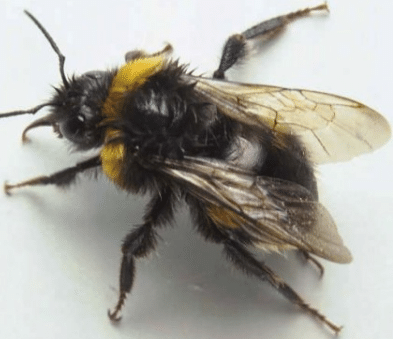
bumble bee picture
Here you can have a look at some of the bumble bee sting slideshow to see photos of the skin appearance after sting. To add on that, discover how to identify and treat bumble bee stings or bites, and read up on what you can do to avoid coming in contact with bees and other insects that sting.
Bumble Bee Sting Swelling
Many different insects are able to inflict a poisonous bite or sting, the insects most likely to cause medical problems are bees – domestic honey bee, Africanized “killer” bee, and the bumble bee. Others include, wasps, and ants which may cause the site to swell or develop rashes. These insects are all in the hymenoptera order, and thus stings from them are occasionally called hymenoptera stings
Because many of these species live in colonies, if one stings you, you may be stung by many. Although most stings cause only minor medical problems, some stings may cause serious medical problems and even death.
Bumble bee sting and wasps stings causes
Bees and wasps inject venom by stinging unlucky people. Sometimes especially with bees, the stinger may be left in the skin. The venom is poisonous and may cause direct injury to the human body. This injury is usually confined to the areas close to the sting or stings.
Swelling
It is very common that after an insect sting, you will develop a swelling on the area where the stinging occurred. This may be due to allergic reactions as new harsh elements have been introduced in the skin. After some few hours or days the pain and swelling may go away but for those who are more reactive there is need for more medical response to cab the problem.
Bumble Bee Sting Pain
Bee stings can result to different reactions, ranging from temporary pain and discomfort to a severe allergic reaction. Having one type of reaction doesn’t mean you will always have the same reaction every time you are stung.
Mild reaction
Most of the time, bee sting symptoms are minor and include:
- Instant, sharp burning pain at the sting site
- A red welt at the sting area
- A small, white spot where the stinger punctured the skin
- Slight swelling around the sting area
In most cases, when one is sting with bumble bee swelling and pain go away within a few hours.
Moderate reaction
Some people who get bumble bee sting or other insect have a bit stronger reaction, with signs and symptoms such as
- Extreme redness
- Swelling at the site of the sting that gradually enlarges over the next day or two
In moderate reactions, they usually resolve over a few days. Having a moderate reaction does not mean you will have a severe allergic reaction the next time you are stung. But some people develop similar moderate reactions each time they are stung. If this happens to you, talk to your doctor about treatment and prevention, especially if the reaction becomes more severe each time.
Severe reactions
A serious reaction from bumble bee stings is potentially life threatening and requires emergency treatment. A small percentage of people who are stung by a bee or other insect quickly develop anaphylaxis [serious allergic reactions]. Signs and symptoms of this may include:
- Skin reactions including hives and itching and flushed or pale skin.
- Difficulty breathing
- Swelling of the throat and tongue
- A weak, rapid pulse
- Nausea, vomiting or diarrhea
- Dizziness or fainting
- Loss of consciousness
Those people with serious bumble bee stings have a 30 to 60% chance of anaphylaxis the next time they are stung. It is important to see your doctor or an allergy specialist about prevention measures such as immunotherapy to avoid a similar reaction in case you get stung again.
Multiple bee stings
In general, insects such as bees, and wasps are not aggressive and only sting in self- defense. In most cases, this results in one or perhaps a few stings. However, in some cases a person will disrupt a hive or swarm of bees and will get multiple stings. Some types of bees like bumble bees are known to produce multiple stings at a given strike and others are likely to swarm in small groups hence lounge a numerous attack on the enemy.
If you get stung more than dozen times, the accumulation of venom may induce a toxic reaction and make you feel quite sick. Signs and symptoms include:
- Nausea, vomiting or diarrhea
- Headache
- Vertigo
- Feeling faint or fainting
- Convulsions
- Fever
Multiple stings can be a medical emergency in children, older adults, and people who have heart or breathing problems.
When to see a doctor
In numerous occasions bumble bee stings do not require a visit to the doctor as they are not badly off. In more severe cases, you will need immediate attention of a doctor.
When you have a serious reaction to a bee sting that suggests an anaphylaxis, even if it is just one or two signs or symptoms.
If you were prescribed an emergency epinephrine auto injector, use it right away as your doctor directed.
Seek immediate attentions from a specialist if you have been swarmed by bees and have multiple stings.
Also you can visit a doctor if the bumble bee sting symptoms do not go away within a few days, or you have had other symptoms of allergic response to a bee sting.
Bumble Bee Sting Remedy
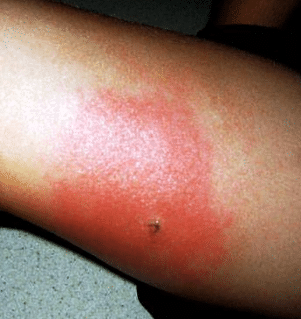
bee sting swelling
The more one get involved with insects or bees, the less he/she can get stings from them, but you will always get them. Bumble bees and honey bees are quite gentle, and to sting is like suicide mission for them as they can die in the process. There are times when they get aggressive when irritated, but mostly they are fine if they are not disturbed or exposed to danger.
The bumble bee sting can result to swelling, from a localized area, anaphylactic shock, or a systematic reaction, which are only allergic reactions that may develop. Having been involved with bees for a while, and being stung, you may get to know some of the best home care treatment that may solve your problem.
At home treatment for honey and bumble bee stings
Lavender essential oil
It is helpful in soothing, and it can ease discomfort, and greatly reduce that infuriating itching, and also help reduce the swelling. You can as well add some water to the oil at it also helps. You should make sure beforehand that you don’t get irritated by the essential oil, as the last thing you want is to make the sting even more uncomfortable.
Apply one drop of lavender essential oil directly on the sting. Make sure the stinger is completely out before doing so. Do this twice the first day, and one time the next day.
Mud
When you are completely got unprepared, mud will work just fine to help with the initial pain that comes with a sting.
Add enough water to dry dirt to make a thick but easily applicable mud. Cover the sting completely. When you get home, rinse clean and pat dry.
Bee balm
Is a blend of beeswax and essential oil makes the perfect little rub for bee stings as they can be carried about in your purse or pocket in a handy little tin, and can be readily utilized the moment you get stung.
Melt your beeswax and coconut oil together, and remove from the heat. Stir in essential oil and honey. Pour into your tin, put the lid on, and let it cool completely before use.
Baking soda paste
Sodium carbonate is great bee sting home remedy that just about anyone can pull off. All you need is baking soda, of course, and a bit of water. The baking soda will help relieve swelling, as well as soothe itching.
Add enough water to a bit of baking soda to make a paste. It should be thin enough that you can spread it over the sting, but not so thick as to not spread around or clump up and fall off. If the sting is on your hand, covering it with an adhesive bandage can be helpful. Rinse clean with cool water before reapplying.
Rhubarb juice
It helps to relieve pain from bumble bee sting. Break open the fresh stem of rhubarb and apply the juice directly to the sting. Repeat as needed and note that this may stain your skin temporarily.
In general the home remedies for bees and wasp stings include:
- Most simple insect stings in a nonallergic person require no more than first aid at home.
- Avoid further stings by wearing protective clothing, using insect repellant, and avoiding infested areas.
- Remove any stingers remaining stuck in the skin [most likely for bees] immediately. Some experts recommend scraping out the stinger with a credit card. Just to get the stinger out as quickly more possible than to be overly concerned about how it is removed.
- Application of ice to the sting site may provide some mild relief. The ice can be applied for 20 minutes once every hour as needed. Cloth should be placed between the skin and the ice to avoid freezing the skin.
- You can take an antihistamine to reduce the itching from the site.
- You can as well take pain relievers reduce pain if there is need.
- Clean the site with warm water and soap and place an antibiotic ointment on the site to prevent more infections.
- If you have taken more than 10 years since you had a tetanus booster immunization, get a booster within the next few days.
- Most insect stings require no additional medical care. More serious reactions may need immediate medical care.
- If you have a bumble bee sting or a sting from wasp and have previously had serious allergic reactions, seek medical attention immediately. You can consider taking antihistamine as soon as possible. If any allergic symptom develops, you can use the epinephrine part of an emergency allergy kit if previously was prescribed by a doctor.
Bumble Bee Sting Treatment

bumble bee sting pictures
Although most stings can be treated at home, some will require more medical care if the symptoms are severe or if you were attacked by numerous number of bees.
There are several conditions resulting from bee stings that may require you to take quick medical care measures to prevent more problems.
You can visit your doctor or any hospital around you if you have a large localized reaction [greater than about 10 inches in diameter] occurs, evidence of infection that is, increasing pain, swelling, redness, drainage of pus or fever, is present at the sting site, or any symptoms that last for more than a day or two.
If it has been more than 10 years since your last tetanus booster immunization, contact your doctor about getting another one if you had a bumble bee sting recently.
Although most stings do not require medical care, remember some stings can be serious or even fatal. If you have the slightest suspicion that someone is having a generalized or allergic reaction, seek emergency medical care immediately.
It is the best option to seek medical care if someone is having allergic reactions. It is good you know that, allergic reactions from stings may occur to someone with no prior history of allergic reactions. Any of the following may indicate an allergic reaction:
- Difficulty in breathing
- Difficulty in speech
- Swelling in the mouth or throat
- Rash all over the body
- Faintness or decreased level of consciousness.
- If more than 10 to 20 stings have occurred, especially with bumble bee stings in children, elderly people or people with underlying medical conditions
- If the sting involves the inside of the mouth or throat, especially if it is in children and involves more than one sting.
- If the sting involves the eyeball itself
- If a person has been stung by an insect species that has previously caused an allergic reaction in the person- even if there is no evidence of a current allergic reaction
- If a large localized reaction or evidence of infection is present at the sting site or sites.
Examination and tests for bumble bee sting and wasp sting
The quick medical evaluation will likely to first include checking the vital signs like blood pressure, pulse, breathing rate and temperature. The doctor will then focus on examining you for evidence of breathing or airway difficulties, shock, and widespread rash.
A history, including current medications, underlying medical problems, and previous allergic reactions, will be obtained.
The physical examination and vital signs will largely determine what treatment is given. Blood work, X-rays, and other tests are rarely needed.
Bumble bee sting and wasp sting treatment
Treatment will depend on the seriousness of your condition. It is important to note that no specific antivenom is available to counteract the poison injected by the insect. The majority of problems requiring medical treatment result from allergic reactions from the sting. Many of the complications from an allergic reaction respond well to various medications when given time.
Further references:
- What are bumble bees and do they sting? http://www.phadia.com/da/Products/Allergy-testing-products/ImmunoCAP-Allergen-Information/Venoms/Allergens/Bumble-bee/
- Bumble bee sting: http://www.orkin.com/stinging-pests/bees/bumblebees/stings/
- Bee stings, pictures, pain, consequence and how to avoid: http://www.thebeeinfo.com/bumble-bee-sting/
- Symptoms of bee stings: http://www.mayoclinic.org/diseases-conditions/bee-stings/basics/symptoms/con-20034120
- Effective home remedies for bee stings: http://everydayroots.com/bee-sting-treatment
- Bees and wasps stings treatment: http://www.emedicinehealth.com/bee_and_wasp_stings/article_em.htm


